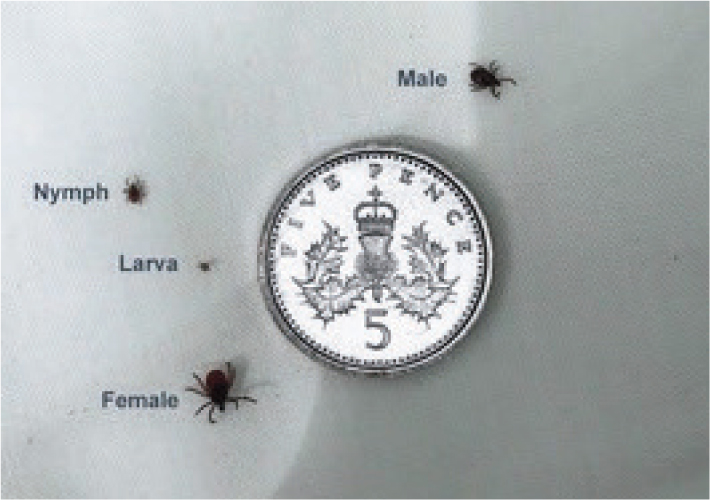What the practice nurse needs to know about Lyme disease
Abstract
Lyme disease has been found in ticks all over the UK. Julia Knight provides an overview of the risks, diagnosis and treatment
Lyme disease is a bacterial infection caused by a spiral shaped bacteria called Borrelia and is transmitted via an infected tick bite. Ticks can carry other infections such as Anaplasma and Babesia. Tick borne encephalitis (TBE) has also been found in a small number of ticks in the UK. Ticks are arachnids and can be as small as a poppy seed (Figure 1).
 Figure 1. Ticks laid next to a 5p coin. They can be as small as a poppy seed
Figure 1. Ticks laid next to a 5p coin. They can be as small as a poppy seed
Infected ticks can be found all over the UK and are found in woodland, heathland and parkland, but have also been found in urban parks and gardens. You can be bitten and infected at any time of the year, but ticks are most active from March to October. The Big Tick project (2015) found ticks on 1 in 3 dogs that their owners were unaware of.
Register now to continue reading
Thank you for visiting Practice Nursing and reading some of our peer-reviewed resources for general practice nurses. To read more, please register today. You’ll enjoy the following great benefits:
What's included
-
Limited access to clinical or professional articles
-
New content and clinical newsletter updates each month

